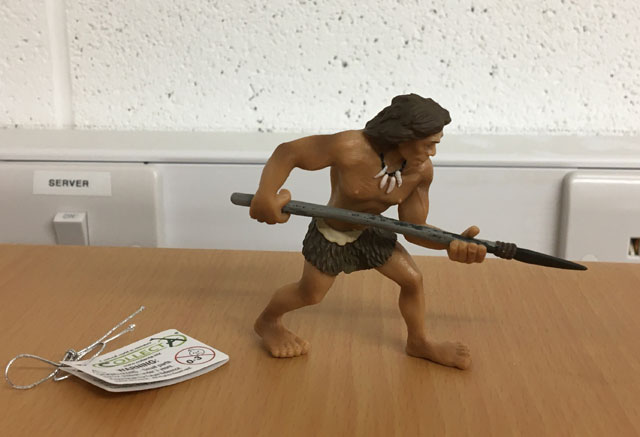Research Suggests that some of our Ancestors were Cannibals
Gnawed Bones Indicate Cannibal Cavemen
A team of researchers have conducted a rather macabre experiment to see if they could confirm the theory that some of our ancestors chewed on human bones, that some of our ancestors were cannibal cavemen. Scientists have found butcher marks and other signs on fossil human bones suggesting that some of our ancestors and indeed, some other species of hominid were cannibals. However, to gain further insight, scientists needed to show that the marks and scratches found on ancient human remains had been created by people biting and chewing on the bones.
Cannibal Cavemen
To understand more about the marks on the bones, the researchers first had to gain more information as to what such bite and gnaw marks might look like.
Volunteers were asked to chew and gnaw on a variety of bones, not human bones of course, but raw pork ribs and sheep legs as well as a variety of cooked bones. The bone-chewers included both Europeans and representatives of the Koi people from Namibia. It was important to include Africans in this study as most scientists now believe that hominids and our own ancestors evolved in Africa.
The researchers identified several patterns in the chewed bones, including bent rather scalloped edges, surface punctures and grooves. Similar bite marks and scratches have been found on 12,000-year-old fossil bones from H. sapiens (modern humans) from Gough’s Cave in England. Gough’s Cave is part of a cave system in the Mendip Hills (Somerset), there has been extensive evidence of human habitation, now this new research sheds light on a more disturbing aspect of human behaviour. Similar marks and scratches on fossilised bones have been found on the ancient bones of the extinct human species H. antecessor at the Gran Dolina site in Spain.
A Replica of a Neanderthal Caveman

Selecting a CollectA Neanderthal man figure for an Everything Dinosaur customer. Picture credit: Everything Dinosaur.
Picture credit: Everything Dinosaur
To view the range of CollectA models in stock: CollectA Prehistoric Life Models.
Pictures show a rib fragment compressed and slightly bent at one end (shown by the white arrow), chewed by a European volunteer using the molars (cheek teeth). The small inset shows one of the volunteers in action.
It is interesting to speculate on the reasons for the cannibalism. Perhaps, it was out of necessity with hominids having to turn to eating human flesh and bones due to lack of other food resources. May be the gnawing of human bones had some sort of ceremonial purpose.
One of the authors of the report, which appears in the latest edition of the scientific publication “The Journal of Human Evolution”, Fernandez-Jalvo stated:
“Think that a member of your group dies, the body can give one day off from hunting, which was always dangerous at that time, and what to do with the dead body that may attract other dangerous carnivores that may attack the group. This could be a good solution.”

